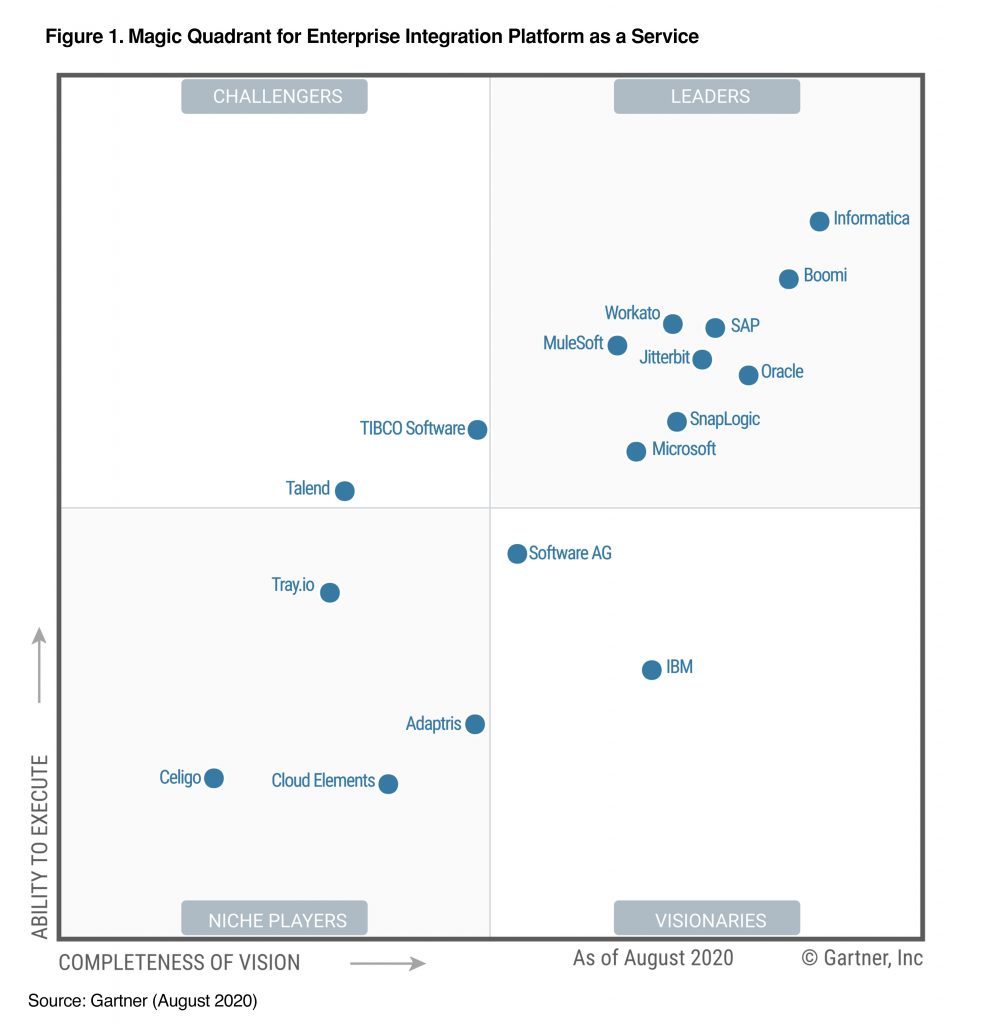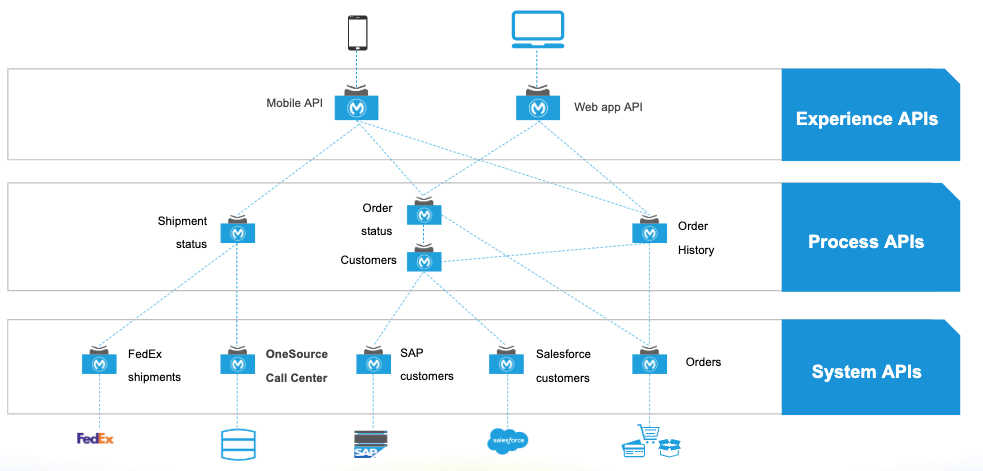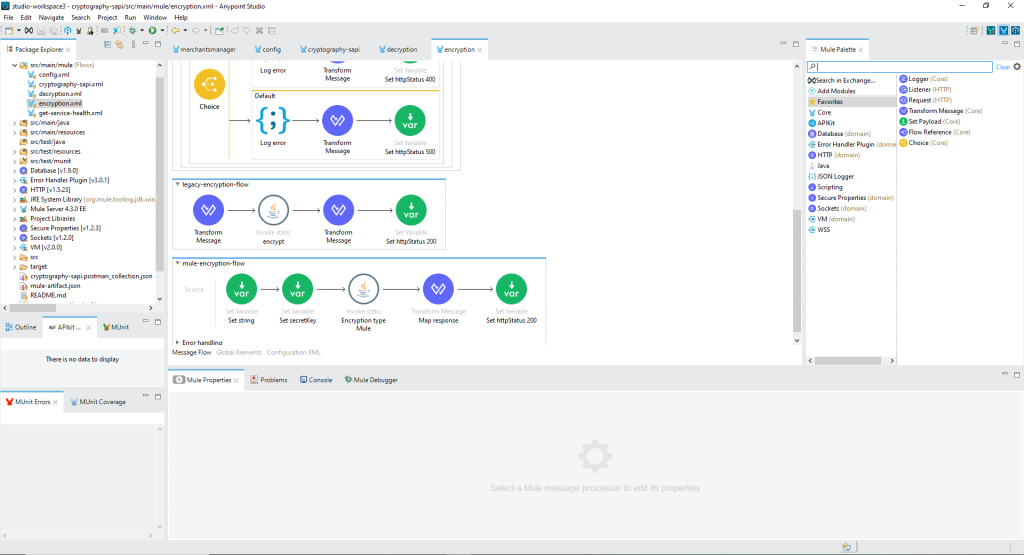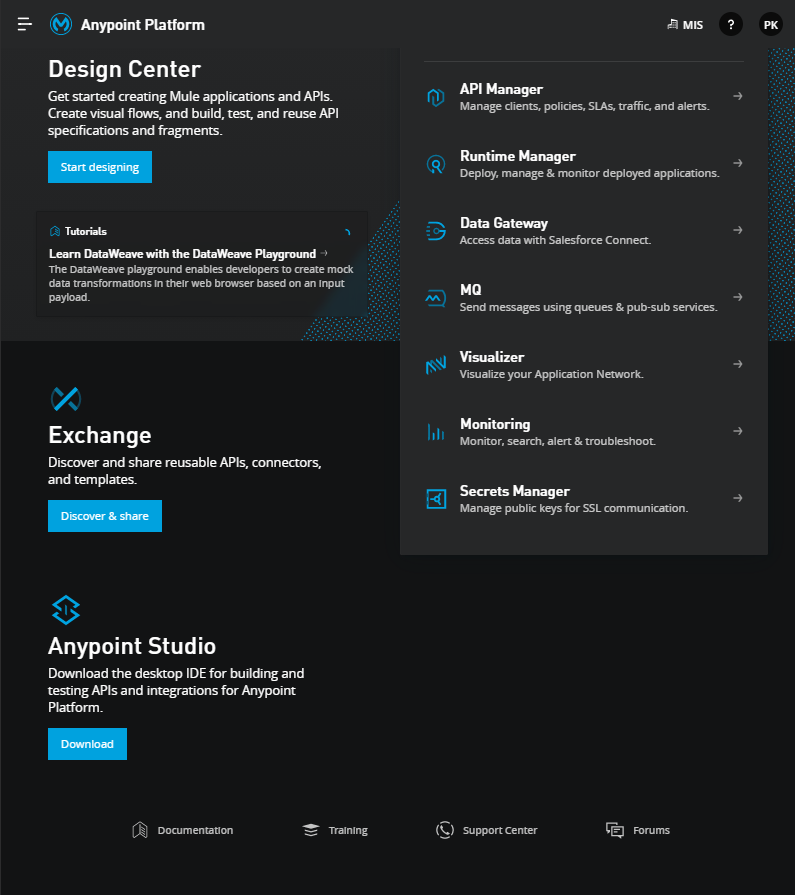- Hubert Liberadzki
- Read in 3 min.
We’ve been using and, more importantly, training new Mule developers for a long time now. Why’s this platform so incredibly interesting and worth giving a try? Well, in fact this article is all about introducing the Mule, so definitely we’re going to focus on its main strengths and advantages, and of course what makes the platform so unique. Who knows, maybe your coworkers will simply like it, as ours did.
Mulesoft – brief description
In a few words, Mule, runtime engine of Anypoint Platform, is a lightweight Java-based enterprise service bus (ESB) and integration platform in one. Mule simply enables developers to interconnect applications, making the exchange of data quick and simple. Moreover, it enables the integration of already existing systems, despite the fact, whether the app uses different technologies, such as JMS, Web Services, JDBC, HTTP etc., or not.
Mulesoft – main features and background
Now some historic facts from the life of MuleSoft. „It was May 2018…”. Facts are facts: the app was acquired by another unit, specifically by Salesforce, software as a service (SaaS) provider. Salesforce has been using MuleSoft technology as a part of its Salesforce Integration Cloud ever since.

Source: Gartner (August 2020)
How Mulesoft can help your business?
Mulesoft integrates independent systems and/or applications by putting a communication bus between layers, making it loosely coupled and scalable. It is a lightweight integration platform and uses API-led connectivity approach, that allows developers to re-use discoverable assets, with or without applying code changes. It allows Mulesoft apps to become more scalable, accessible, and of course, attain better speed&boost productivity. Its API-led connectivity approach makes the API quickly adaptable to vast changes and fast-growing and increasing technology demands in the business.
Mulesoft – how does it work actually?
Mulesoft provides thousands of API interfaces for all types of apps and systems. It allows to integrate with systems, even though their operating processes may be unclear or unknown to itself. Mule APIs are organised in three-layered-architecture and have different roles. The Anypoint platform is unique in its ability, not only to manage and orchestrate API-led integration, but also to develop and execute APIs.
Three categories, API-led connectivity
- System API- foundation layer of the three-level architecture, – contains records and sensitive information which should be directly exposed to end users.
- Process API- responsible for orchestrating, aggregating, splitting or validating data from the Experience layer to the System layer and vice-versa.
- Experience API- contains APIs which are exposed to the consumers (end-users).

Anypoint Platform components
- API Designer is a web tool that a developer can use to design and document an API, and then share that design with team members.
- API Manager is a component to manage APIs and secure them via an API gateway by creating policies around API calls and throttling.
- Anypoint Studio is a desktop-integrated development environment (IDE) for building your APIs.
- Anypoint Connectors are a set of built-in connectors that a developer can use to integrate applications with thousands of third-party REST and SOAP.
- Anypoint Analytics is a tool to track API metrics, such as performance and usage. It can be also used to create custom charts and dashboards to visualize API performance.
- Anypoint Runtime Manager is the interface to Anypoint Platform which provides a unified view to the developer of all of your apps, servers and APIs. •Anypoint Exchange is a hub used for storage and accessing APIs, templates, connectors, documentation and other resources.•Anypoint Monitoring is a dashboard to monitor applications health. •Anypoint Visualizer is a graphical tool which displays APIs and their dependencies.
Anypoint Studio
- An eclipse based “drag and drop” integration development environment (IDE).
- Used for designing, developing and testing Mule applications.
- Contains a visual editor and has an embedded unit testing framework.

Summary
Well that’s just a small piece of useful information about Mulesoft. All in all, as IT experts and geeks, we encourage you to take a longer read on the producer’s website and try it all by yourself. Why we liked it? It’s really easy to work with. We definitely enjoyed the pace, at which we managed to create new functionalities. What’s more, we loved its lightness compared to other ESBs. Last but not least, it’s the community, what made Mulesoft so great, and personally, we won’t be quickly replacing Mule with anything else.
Check out other articles in the technology bites category
Discover tips on how to make better use of technology in projects










